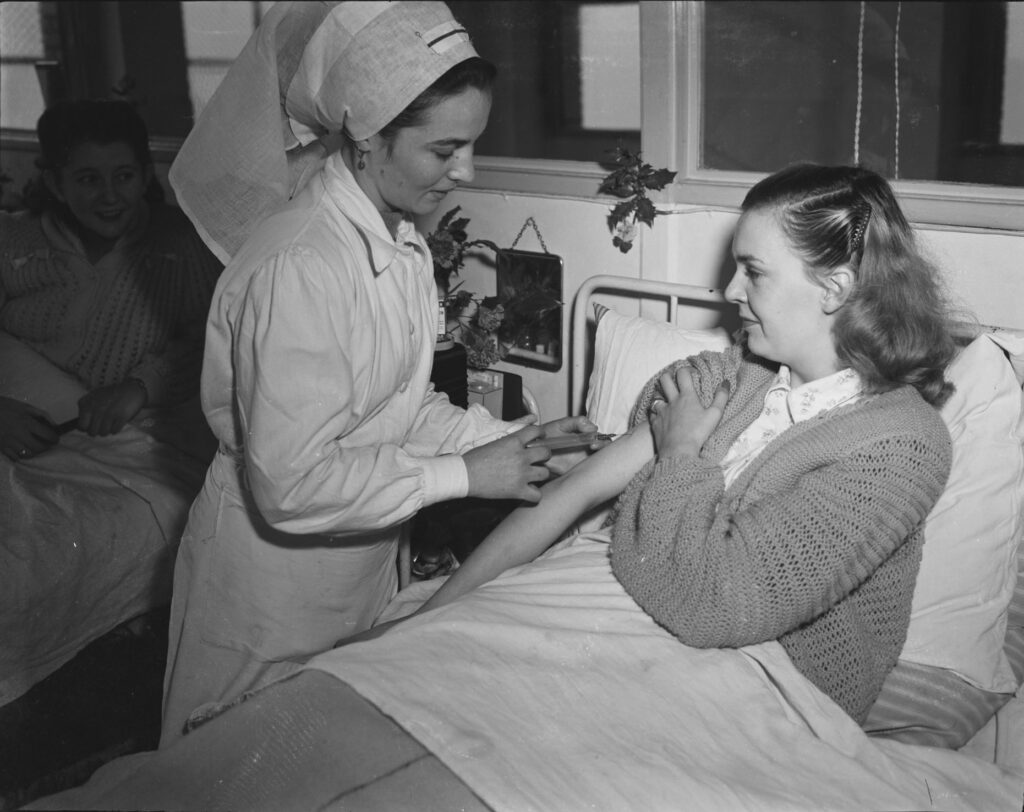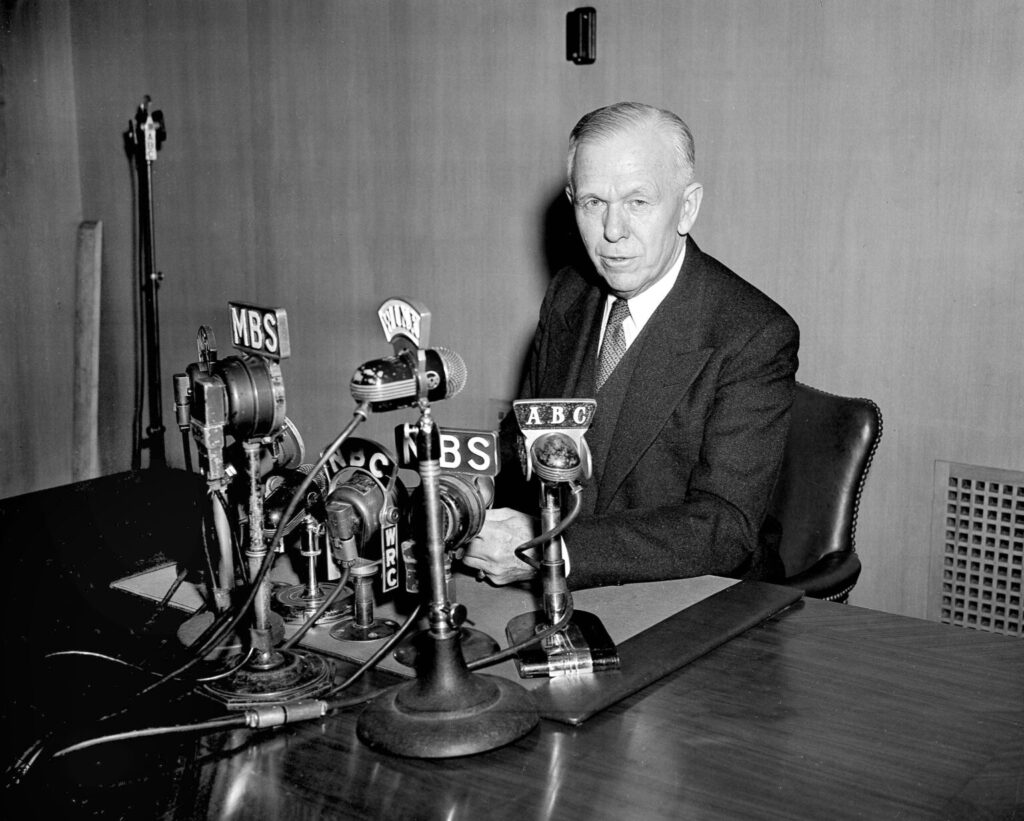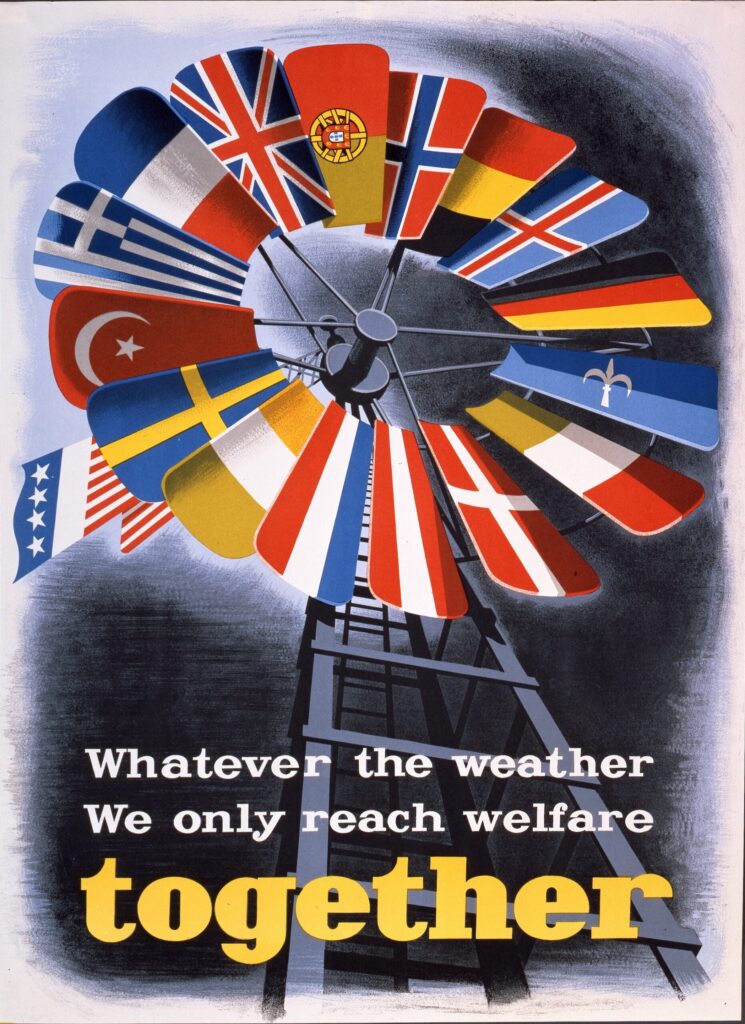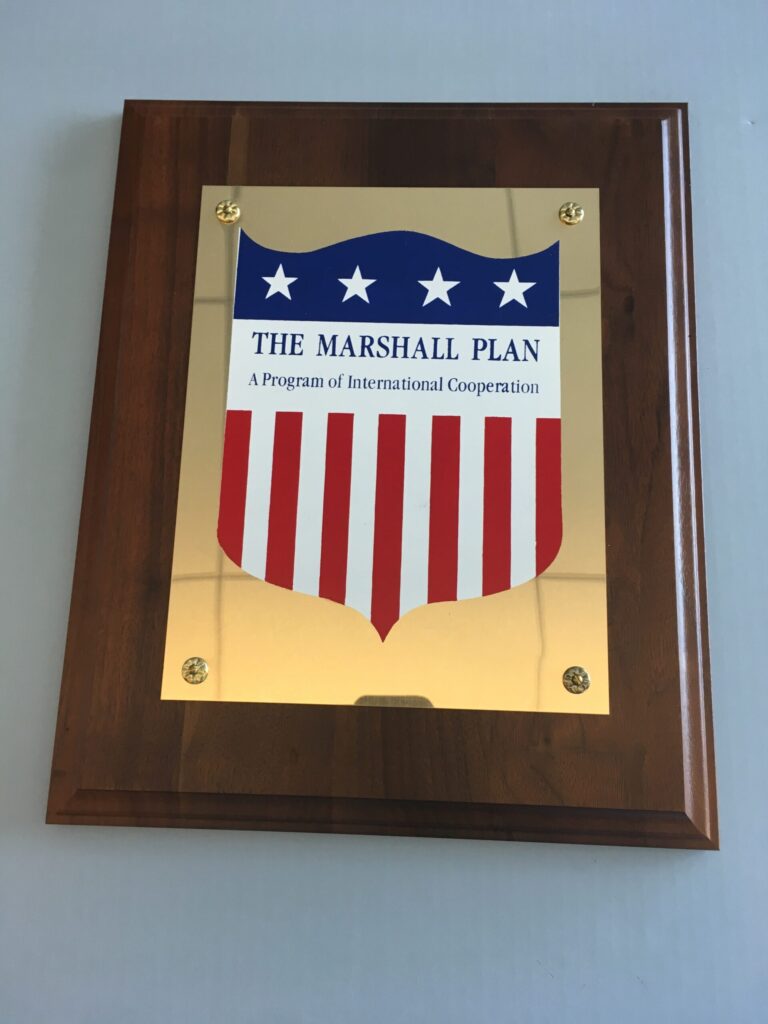The Marshall Plan rebuilt economies in Europe after WWII and provided much-needed business for American companies.

Europe in Crisis
World War II devastated Europe’s economy. Unemployment was high and food shortages were widespread.
The United States feared that poverty would reinforce the appeal of communism and fascism.
Meanwhile, American businesses had ramped up production for the war effort and held a surplus of goods. Without a European market for U.S. goods, America’s economy would suffer.
The United States should do whatever it is able to do to assist in the return of normal economic health in the world, without which there can be no political stability and no assured peace.
George C. Marshall, 50th Secretary of State (1947–1949)

As well as food, the Marshall Plan provided much-needed medicine. Here, a tubercular patient at a Paris hospital receives an injection of the American-made antibiotic streptomycin.
Who is George C. Marshall?

Born in Pennsylvania, George C. Marshall (1880-1959) rose through the ranks of the United States Army to become a five-star general. He served in leadership roles in World War I and World War II, as well as Special Envoy to China.
President Harry S Truman appointed Marshall to be the 50th United States Secretary of State (1947-1949).
Under Marshall’s leadership and advocacy, State Department officials crafted the landmark aid plan’s concept, that bears his name, allowing the European and American economies to flourish following World War II rather than again descend into chaos and war.
For his work and tireless advocacy for this strategic post-war plan, Marshall won the Nobel Peace Prize in 1953.
The Marshall Plan
What do canned tomatoes from Maryland have to do with diplomacy?
Under the Marshall Plan, the United States contributed $13.3 billion in aid—approximately $150 billion in today’s dollars—to 16 European nations between 1948 and 1951. Rather than a free handout, this aid served as a strategic investment to help the countries become strong and stable partners to the United States while expanding markets for American goods.
The sixteen Marshall Plan countries were Austria, Belgium, Denmark, France, Greece, Iceland, Ireland, Italy, Luxembourg, the Netherlands, Norway, Portugal, Sweden, Switzerland, Turkey, and the United Kingdom.
The pioneering plan became a model for how development can help advance foreign policy goals and U.S. interests.


Above is a plaque awarded to William C. Foster, the second head of Economic Cooperation Administration, the organization that administered Marshall Plan aid from 1948 to 1951.